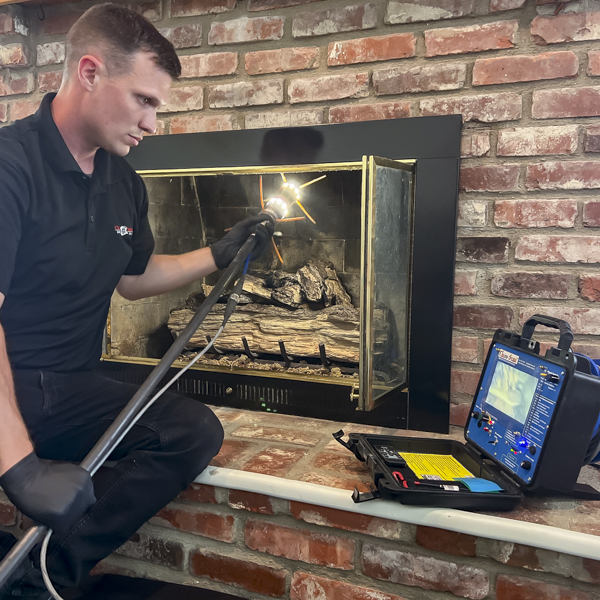Specialist Chimney Cleaning Company: Guaranteeing a Safe and Practical Fire Place
Specialist Chimney Cleaning Company: Guaranteeing a Safe and Practical Fire Place
Blog Article
Comprehensive Chimney Cleansing Providers to Make Sure Ideal Indoor Air Quality
One often ignored component that can substantially influence the air high quality within a home is the smokeshaft. When not properly preserved, smokeshafts can become a source of interior air contamination. To address these worries and guard indoor air high quality, detailed smokeshaft cleaning services are necessary.
Importance of Chimney Cleaning
Routine smokeshaft cleansing is important for preserving ideal interior air top quality and guaranteeing the risk-free and effective procedure of your fire place or home heating system. Over time, chimneys build up creosote, an extremely combustible material arising from the insufficient burning of timber - chimney cleaning company. This accumulation not only positions a considerable fire danger however also decreases the air flow, causing bad combustion and the release of dangerous toxins right into your home
Overlooking chimney maintenance can result in a series of issues, consisting of carbon monoxide gas leakages, which can be serious. Residue and particles obstructions can likewise trigger smoke to back up into your home, leaving undesirable smells and prospective health and wellness risks. Additionally, a clogged smokeshaft can prevent the appropriate venting of gases, leading to raised wetness levels that promote mold development and structural damage.

Indicators of a Dirty Smokeshaft

Smokeshaft cleaning is critical for keeping a safe and healthy and balanced interior environment, and acknowledging the indicators of a dirty chimney is critical in avoiding prospective threats. Creosote, on the other hand, is an extremely combustible material that can accumulate and solidify inside the smokeshaft, raising the risk of a chimney fire.
An additional indicator of a dirty chimney is a strong, unpleasant smell originating from the fire place. chimney cleaning company. This smell is often brought on by an accumulation of particles, such as pet nests or decomposing fallen leaves, in the smokeshaft. In addition, if you notice smoke entering your home instead of correctly venting outside, maybe an indication that your smokeshaft is obstructed or dirty. Routine chimney assessments and cleansings can assist attend to these concerns and make certain the secure procedure of your fire place.
Benefits of Professional Cleansing
Specialist smokeshaft cleaning services offer homeowners an array of advantages that add to maintaining optimal interior air top quality and safety and security. First of all, regular chimney cleansing by experts helps to prevent the accumulation of unsafe compounds such as creosote, a by-product of burning timber that can cause chimney fires. By eliminating creosote and various other debris, professional cleansers reduce the threat of harmful smokeshaft fires that can present a threat to both property and individual safety. In addition, a clean smokeshaft makes certain correct he has a good point ventilation, permitting smoke, toxic substances, and toxins to exit the home successfully. This not only stops the inhalation of dangerous particles however also improves the total air quality inside your home.

Smokeshaft Cleansing Process
To guarantee the continued performance and safety and security of your chimney, it is vital to understand the meticulous procedure associated with its complete cleaning. The smokeshaft cleansing process typically starts with a detailed evaluation to assess the level of creosote accumulation, blockages, or any kind of prospective damages. Professional smokeshaft sweeps will certainly then lay safety treatments around the fireplace to protect against any type of mess within the home. Using customized tools such as brushes, vacuum cleaners, and rods, the smokeshaft sweep will carefully get rid of creosote deposits from the indoor walls of the smokeshaft. Any clogs, such my blog as bird nests or debris, will certainly also be gotten rid of to guarantee correct ventilation.
After the physical cleaning, the chimney move might carry out a smoke emptying examination to check for appropriate air movement. Finally, a comprehensive examination post-cleaning ensures that the chimney remains in optimum problem for future use. By following this thorough procedure, homeowners can maintain a risk-free and effective smokeshaft system, lowering the threat of smokeshaft fires and carbon monoxide leaks.
Frequency of Cleaning
The frequency of smokeshaft cleaning is essential to keep optimal interior air high quality and protect against prospective hazards such as smokeshaft fires. As a general standard, the Chimney Safety And Security Institute of America (CSIA) recommends that smokeshafts ought to be evaluated at least as soon as a year and cleaned up as needed.

Conclusion
In final thought, regular smokeshaft cleaning is crucial for keeping optimal interior air high quality. It is recommended to have your smokeshaft cleaned at the very least once a year to protect against prospective hazards.
Report this page